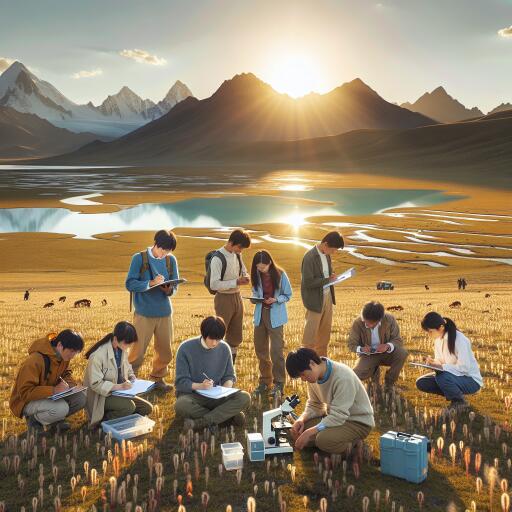
Revolutionizing Ecological Understanding: Breakthroughs on the Qinghai-Xizang Plateau
In a groundbreaking effort that marries the precision of technology with the rigor of field research, a team of Chinese scientists has made significant strides in understanding the complex ecosystem and biodiversity of the Qinghai-Xizang Plateau. By synergizing remote sensing technology with comprehensive ground surveys, this group has developed a detailed classification system that sheds new light on the changing landscape of this critical region.
The fruits of their labor include the creation of detailed maps at a scale of 1:500,000, highlighting grassland vegetation, soil typologies, and the distribution of alpine tree lines across an expanse of 2,400 kilometers along the Himalayas. The significance of these maps cannot be understated. As Ouyang Zhiyun, a lead researcher at the Chinese Academy of Sciences’ Research Center for Eco-Environmental Sciences explains, these tools not only delineate the spatial distribution and flux of the plateau’s ecosystems but also enhance our capacity to evaluate the quality and functional services these ecosystems provide.
Furthermore, these maps are instrumental in guiding the strategic development of biodiversity conservation efforts and in planning the setup of national parks across the Qinghai-Xizang Plateau. It represents a critical step forward in preserving the ecological wealth of this vast area.
But the team’s endeavors didn’t stop at mapping. Extensive field research conducted in some of the plateau’s most sensitive and pivotal regions has led to remarkable discoveries in biodiversity. The researchers have cataloged over 3,000 new species indigenous to the area, including 205 animals, 388 plants, and an astounding 2,593 microbial entities. This immense biodiversity underscores the ecological significance of the Qinghai-Xizang Plateau and highlights the urgent need for its protection and study.
Responding to these findings, the autonomous region of Xizang in southwest China has taken significant steps to safeguard its ecological treasures. Over 600,000 square kilometers of its territory are now designated as ecological conservation redlines, embodying over half of the region’s landmass. The establishment of 47 nature reserves, varying in size and type and collectively covering an area of 412,200 square kilometers, further illustrates Xizang’s commitment. Additionally, efforts have led to an expansion of ecologically functional spaces, such as forests, grasslands, wetlands, and water bodies, to 1.08 million square kilometers.
The impetus for this comprehensive research stemmed from China’s dedication to understanding and protecting the Qinghai-Xizang Plateau, initiating this second scientific expedition in August 2017. The mission’s core objective is to untangle the complexities of environmental changes on the plateau and provide a scientific basis for its ecological conservation. This endeavor is not just about mapping and data collection; it’s a vital step toward securing the ecological future of one of the planet’s most unique and diverse environments.
As the expedition continues, the insights gleaned from these researchers’ work will prove invaluable in crafting policies and conservation strategies that safeguard the Qinghai-Xizang Plateau’s ecological integrity. Through their pioneering efforts, we are gaining unprecedented understanding and appreciation of this vital region’s ecological dynamics, providing a blueprint for future conservation initiatives worldwide.





Leave a Reply